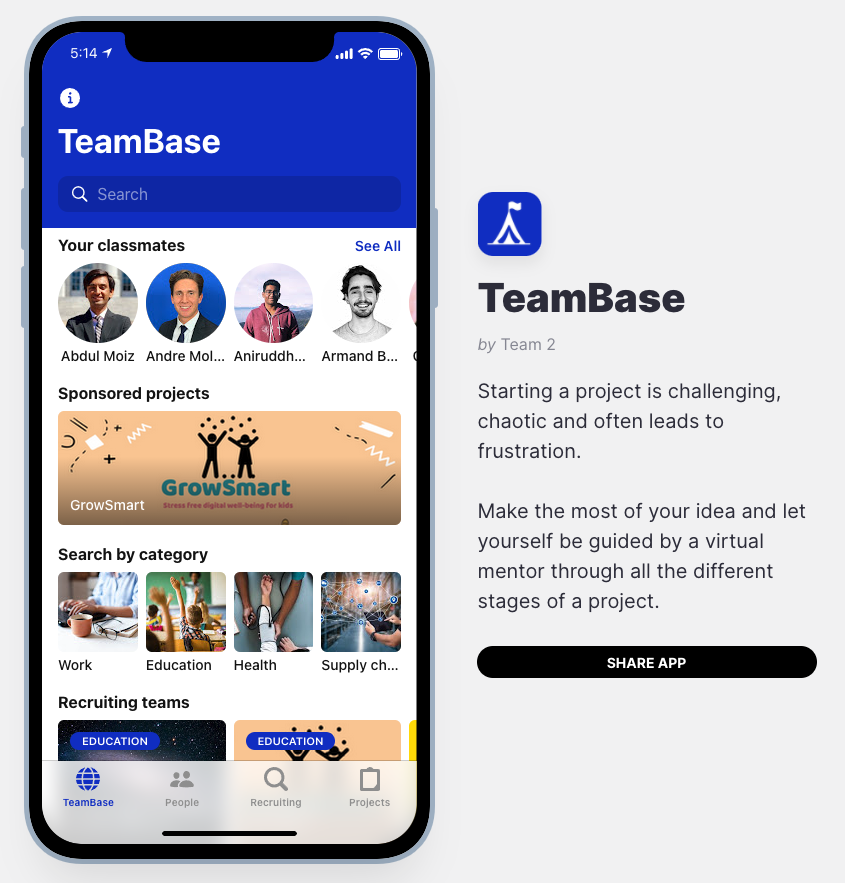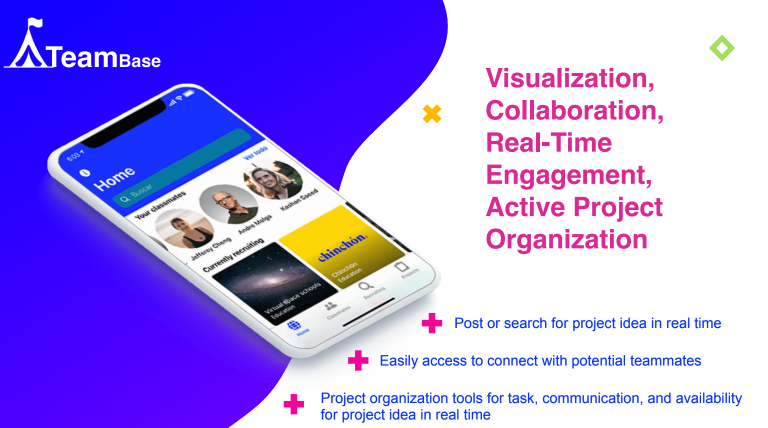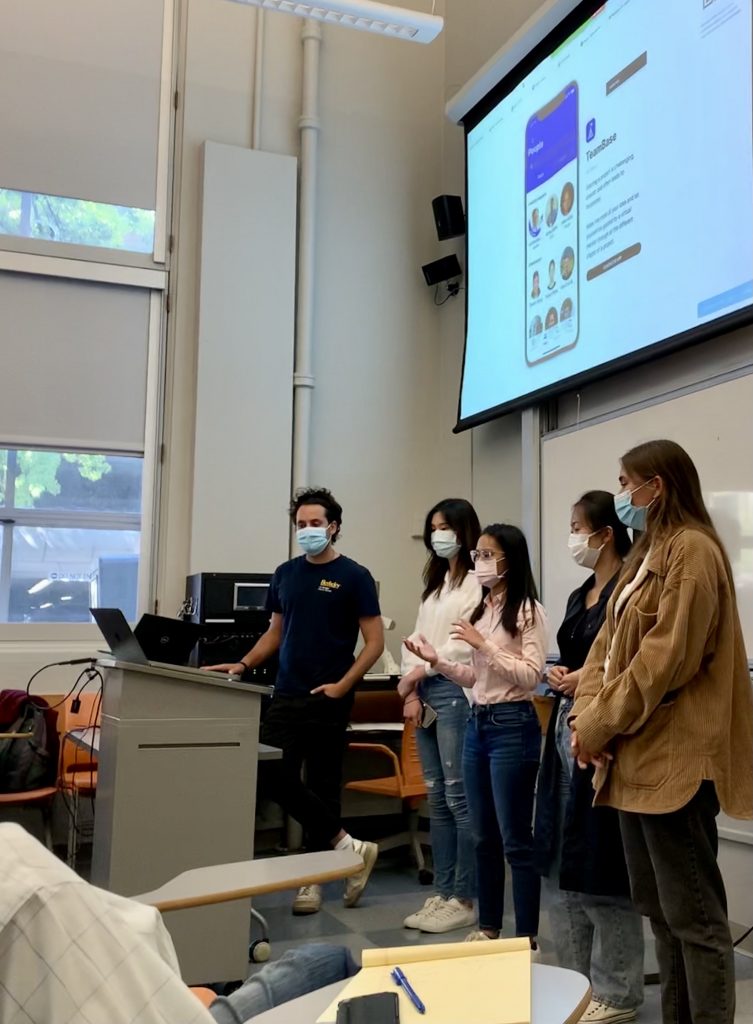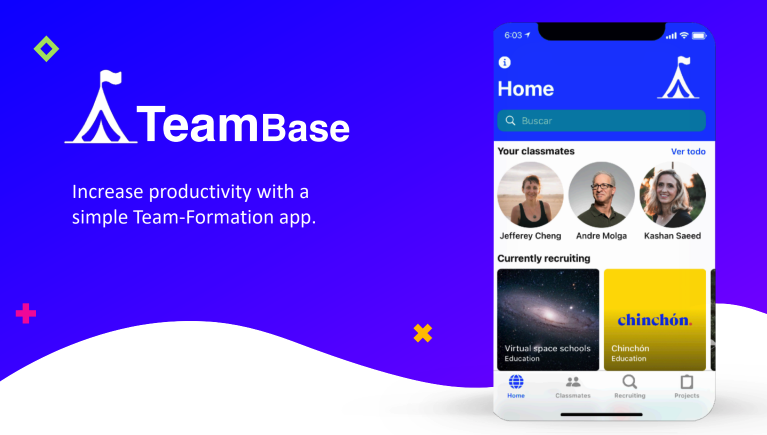This is my first exposure to building a startup product from ground zero. Storytelling, target audiences, business plan, technical challenges, and many more components of this project challenged me to transform. The only way to understand the problem I am trying to solve is to validate with the users and customers. Iterating through many cycles of failures to improve over time and establish a new concept is satisfying. Even though my primary focus was on UI/UX aspects, my responsibilities were not limited to this area. I studied innovation engineering, project management, and product validation.
My Role in This Project
Initial Phase:
As a team, we identified the problem with the team formation process in a classroom setting. To validate this problem, I conducted user interviews where I interviewed students, professors, and graduate student instructors by asking questions like:
- How are project teams formed in your classroom?
- What are some necessary qualifications for a good team to you?
- What measurements do you use to determine if a team is ideal?
Our initial solution was to design an AI algorithm where it will provide suggestions for teammates. Based on the user interviews, I learned that 1) the design of the algorithm may lead to biases or potential discrimination 2) students distrust the algorithm to provide team formation suggestions 3) the design of the algorithm is too complex and out of our ability since the requirements for ideal teammate are highly personalized. By conducting user interviews on various perspectives, I validated the problem, narrowed the scope of the project, and created a narrative for the product. The results of user interviews benefit the persona-building process later in the project.
Intermediate Phase:
The Minimum Viable Product of TeamBase was created as a “low-tech demo” showcasing the functionality and interface of the platform. I piloted several usability tests to observe potential target users (students) navigating the platform and documenting their behavior. I also asked them generalized questions regarding their experiences with the platform. With the user experience feedback collected qualitatively from participants, I provided suggestions on the interface design and reevaluated features of the platform (Example below).

Overview on the Project
Need/ Problem:
We found that group forming in a project-based course or hackathon can be a challenge. There is often a lack of information and engagement necessary to find the ideal team. Traditionally, students will present their idea in front of a class that lacks a centralized method to learn more about specific concepts. Many classes deployed Google surveys or Excel spreadsheets as the primary method of group forming, which is complicated and unattractive visually. It simply is too time-consuming to read through lines and lines of cells to find an outstanding team.

Our Approach:
We built a platform that allows students to visualize team and classmate information. This platform has functions that will enable students to message each other, add project ideas, search for a project, and filter projects based on categories in real-time. It provides an engaging solution and making team formation efficient. By minimizing the time needed to search for a team, we also maximized the work time for groups under a restricted timeline of a semester. The big vision idea will also expand and provide project organization tools for tasks, communication, availability.

User Persona:
The two types of user persona we have are professor and student.
- Aleks – A Berkeley professor teaching classes with 90 students working on 20 different projects. Aleks has to verify the requirements of each group, wants a balanced number of students, technical ability, expertise, and background in each group, and has to deal with group changes with new or failing out projects. Making sure each group has what they need to start the project can be challenging.
- Taylor – A student in innovation class doesn’t know what project ideas there are and where to find more information on concepts she is interested in. She has a list of classmates’ emails but failed to recognize their names. She finds it frustrated to start the course this way.
Potential Customers:
With the positive feedback from students and professors using this product as users, our potential customers are universities, schools, and companies. Educational institutions that have firsthand experience with our product are likely to purchase it. Industry professionals who may want to collaborate with students on projects are also likely to purchase our product to easily promote their projects on our platform.
Currently Stage (As of October 2021):
Our beta version of the model has been created, and we will be testing it with a Berkeley professor who has a class of 50 students. Another Berkeley faculty currently leading a hackathon-like event in India will also use our product to form teams in the coming weeks.
Click here to see the beta version of our product.
Colleague
For the course project, I am working along with:
- Clara Haba – Exchange Entrepreneurial Engineer Master Student from Spain
- Jacob Garcia – Exchange Architect Master Student from Spain
- Katie Lin – Psychology Undergraduate Senior
- Yixan Cheng – Industrial Engineering and Operation Research Master Student

Innovation-X: Future of Industry Startup Lab is a course enabling students to apply both technical and broad skills in emerging ideas. Read more about the program here.



